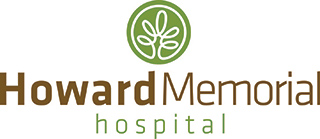Blog
New Pediatric Therapy Center
Finding his voice—and so much more: a patient perspective

A child’s frustration
In 2018, 2-year-old Levi was referred to Howard Memorial Hospital speech language pathology. His functional communication skills were minimal, and he was very difficult to understand. Levi was diagnosed with a lesser known diagnosis: childhood apraxia of speech (CAS), a motor speech disorder. Simply put, Levi knew what he wanted to say, but he couldn’t say it. Even more frustrating for the toddler, he had a vocabulary that was well above average for his age. His mouth just wasn’t doing what his brain was telling it to do, which made it very difficult for others to understand him. Helping Levi required a multi-tiered approach and the skills of several different therapies.
Patience meant understanding
Levi began by working on his sounds and using the correct placement for each sound in an effort to pronounce words more intelligibly. He also started to use picture exchange communication to convey his wants and needs which helped decrease his frustrations. While using picture exchange, his speech-language pathologist (SLP) also got him a speech generating device that uses his voice to help him speak intelligibly during communication breakdowns. Soon, Levi was using 2- and 3-word phrases and sentences, a huge accomplishment for anyone with CAS, but especially for someone so young. Levi did use the device when a partner couldn’t discern a certain word, but he quickly started to communicate independently.
Challenges met
Childhood apraxia of speech is very difficult to overcome, but Levi persisted. He has made significant strides in his communication and continues to progress and grow. Soon after he started speech therapy, he was referred to occupational therapy and physical therapy as well. It’s common for kids experiencing developmental delays in one area, to have delays in other areas as well, especially with apraxia. The diagnosis often carries over to other motor skills, which was true for Levi.
Building confidence and independence
Levi started occupational therapy (OT) in 2019 to get help with shape recognition, fine motor coordination, grasp weakness and to improve his pre-writing skills. The toddler worked diligently, drawing vertical and horizontal lines and is now advanced to more complex tasks like drawing shapes accurately. Levi’s fine motor quickly developed as did his handwriting skills; he also had more precise fine motor coordination and improved hand strength. All of his new skills quickly came together—handwriting was easier and Levi accomplished the pre-writing prerequisites he needed for pre-kindergarten and kindergarten. He also felt more independent and confident overall.
Growing stronger with physical therapy
Physical therapy also helped Levi’s therapy journey. After an evaluation, the PT team observed several abnormal movements particularly toe walking, frequent tripping and sensory processing difficulties. An active little boy, Levi has excelled in his physical therapy program and greatly improved his gross motor skills. In just a few short months, Levi developed the strength and movement patterns he needed to stop walking on his toes. He experiences significantly fewer falls and has responded very well to a sensory based treatment plan—personalized to him—to help with his challenges.
Complete care and the commitment of family
Levi’s customized, holistic therapy plans helped providers partner with Levi to break down the barriers that the once-frustrated child faced. Equally important to Levi’s success is a loving, supportive family. Parents Amber and Brandon brought Levi to the Pediatric Therapy Center for the help he needed and rarely miss a visit. A strong support system is critical, particularly for children, and for Levi it made all the difference. Amber and Brandon found their son the help he needed to help him meet his goals—and so much more. Young Levi continues to thrive. And his HMH therapy teams are overjoyed to help their young friend learn the skills he needs to grow up heathier, happier and much more confident.
Posted in: Fitness/Rehab, Kids